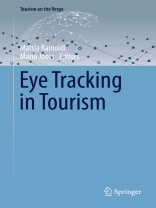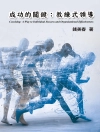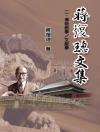Despite the ever-increasing interest in eye tracking, there is still no comprehensive work on the potential and applications of table-mounted and mobile head-mounted eye tracking solutions in travel and tourism. This volume bridges that gap, effectively linking eye tracking with travel and tourism.
It presents, on the one hand, novel academic contributions on the concept of eye tracking, and on the other, practice-oriented case studies that illustrate the use and strategic value of eye tracking in travel and tourism. It provides concrete and novel insights into tourist behavior and the tourist consumer experience and, for the academic community, offers a comprehensive, scientifically based overview of the empirical, methodological, theoretical, and practical contributions of eye tracking research.
Accordingly, the book will be of value to a diverse audience. It will be a useful resource for existing and future tourism businesses, allowing them to adopt proactive approaches in the design of tourism products. It will also stimulate further research in the field and inspire scholars and practitioners to combine their ideas and expertise, to look beyond supposedly fixed horizons, and to identify emerging opportunities.
Tabella dei contenuti
Introduction to Eye Tracking in Tourism.- Eye tracking methods, concepts and applications. – A review of eye-tracking methods in tourism research.- Best practice for eye-tracking studies: DOs and DON’Ts.- Eye-tracking: Evaluation, potential, and limitations of field applications.- Knowledge Co-Creation through Eye Tracking in Tourism.- Eye tracking research and case studies. – The Relevance of Eye-Tracking to Understand Users’ Practices and Content Interpretation in Tourism-related Online Navigation.- Areas of Interest on Destination Websites: A Generation Y’s Perspective.- Measurement of visual attention to advertising using eye-tracking techniques.- User Experience Improvement for Online Travel Agencies through Eye-tracking – the Onlineweg.de Case Study.- Areas of interest for a CSR certificate on touristic websites: An eye tracking experiment using the example of Tour Cert.- Acquiring sustainability information in holiday travel.- The museum learning experience throughthe visitors’ eyes: An eye tracking exploration of the physical context.- Using Mobile Eye-Tracking to Inform the Development of nature tourism Destinations in Iceland.- Viewing behaviour and task performance on Austrian destination websites: Comparing Generation Y and the Baby Boomers.
Circa l’autore
Prof. Mattia Rainoldi is a Researcher and Lecturer in the Department of Innovation and Management in Tourism and Head of the e Tourism Lab at Salzburg University of Applied Sciences (Austria). Mr. Rainoldi directs interdisciplinary research projects engaging extensively with international academic and industry partners. Prior to joining academia, he gained broad international experience in the tourism and hospitality sector. His research interests lie in the areas of digital technology, work, and leisure.
Prof. Mario Jooss is a Senior Researcher and Lecturer in the Department of Innovation and Management in Tourism, and the Head of the Tourism Research Department at Salzburg University of Applied Sciences (Austria). His research focuses on digital technologies and innovation management in tourism. Prof. Jooss has co-authored and co-edited several books including ‘Social Media Marketing and Management in Tourism’.












